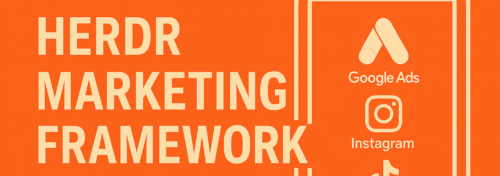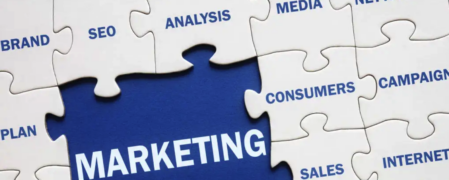Mastering the AIDA Model: A Practical Guide to Driving Customer Engagement

The AIDA model—Attention, Interest, Desire, Action—is a classic marketing framework that outlines the steps to guide customers through their journey from awareness to purchase. This method remains a cornerstone of effective marketing strategies, blending psychology with communication to convert prospects into loyal customers. Let’s explore each stage in detail and uncover actionable tips to implement the AIDA model successfully in your business.
1. Attention: Grabbing the Customer’s Focus
The first step is to capture your audience’s attention. In today’s fast-paced digital world, consumers are bombarded with information, making it crucial to stand out.
Strategies to Capture Attention
- Eye-Catching Visuals: Use bold, high-quality images or videos that evoke curiosity. For instance, brightly colored ads or unexpected animations on social media are effective attention-grabbers.
- Strong Headlines: Write headlines that address pain points or promise solutions. Example: “Struggling to Manage Projects? Here’s the Tool You Need!”
- Emotional Appeal: Leverage emotions—humor, surprise, or empathy—to instantly connect with your audience.
Practical Tip
Use A/B testing for headlines, visuals, and formats to identify what captures attention most effectively in your target demographic.
2. Interest: Keeping Them Hooked
Once you have their attention, you need to build genuine interest. This is where you educate your audience about your product or service and highlight its relevance.
Strategies to Build Interest
- Engaging Content: Use blog posts, videos, or infographics that clearly explain the value of your offerings. For instance, a SaaS company might create a short demo video showing how its tool saves time.
- Storytelling: Share customer success stories or your brand journey to make your product relatable and trustworthy.
- Personalization: Tailor your content to the audience’s preferences. Personalized emails or product recommendations can sustain interest.
Practical Tip
Segment your audience based on demographics or behavior to deliver content that resonates. For example, use email drip campaigns with targeted messaging.
3. Desire: Creating an Emotional Connection
Building desire involves making your audience feel like they need your product or service. This stage focuses on transforming interest into an emotional pull.
Strategies to Build Desire
- Highlight Benefits Over Features: Instead of saying “This app has 10 features,” say, “This app saves you 5 hours a week.”
- Social Proof: Use testimonials, reviews, and case studies to show how others benefit from your product.
- Exclusivity and Urgency: Limited-time offers, discounts, or early access can create a sense of scarcity. Example: “Only 10 spots left for our premium membership!”
Practical Tip
Incorporate interactive elements like quizzes or live chats on your website to answer questions and increase emotional investment.
4. Action: Converting Interest Into Sales
The final stage is getting your audience to take action—whether it’s purchasing a product, signing up for a service, or subscribing to a newsletter. The transition should be seamless and clear.
Strategies to Drive Action
- Clear Calls to Action (CTAs): Use action-oriented language like “Buy Now,” “Get Started,” or “Join Today.” Place CTAs prominently across your website or campaign materials.
- Simplify the Process: Reduce friction by streamlining the user journey. For example, ensure your checkout process is quick and mobile-friendly.
- Follow-Up: For hesitant users, follow up with retargeting ads or email reminders. A well-timed nudge can lead to conversions.
Practical Tip
Track and optimize conversion points using tools like heatmaps or analytics to identify where customers drop off and adjust accordingly.
How to Apply AIDA in Modern Marketing Channels
- Social Media:
- Attention: Use reels or short-form videos with bold visuals and captions.
- Interest: Post tutorials or behind-the-scenes content.
- Desire: Share influencer endorsements or highlight limited-time sales.
- Action: Include direct shopping links or “Learn More” buttons.
- Email Marketing:
- Attention: Write captivating subject lines.
- Interest: Share tailored content relevant to the recipient’s preferences.
- Desire: Offer exclusive discounts.
- Action: Add a clear CTA to purchase or sign up.
- Website Design:
- Attention: Use a visually appealing homepage.
- Interest: Provide detailed product pages or engaging blogs.
- Desire: Display testimonials and urgency-driven banners.
- Action: Streamline navigation and ensure easy checkout.
Why AIDA Still Works Today
Despite evolving digital trends, the AIDA model remains relevant because it aligns with human behavior. By addressing attention, interest, desire, and action, you can guide potential customers seamlessly through their journey. The key to success is continuous testing and adaptation to ensure your strategies resonate with your target audience.
Final Thoughts
The AIDA framework is a powerful tool that can be applied to any industry or marketing channel. By understanding and implementing its principles, businesses can craft compelling campaigns that not only attract attention but also drive meaningful results. Start experimenting with the AIDA model today and watch your conversions soar!







